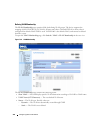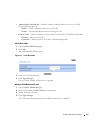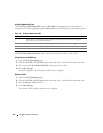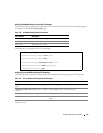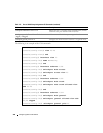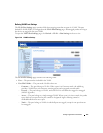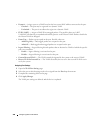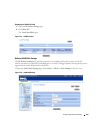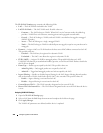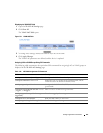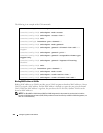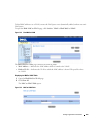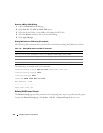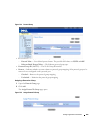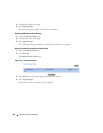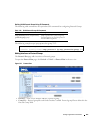
360 Configuring Switch Information
The VLAN LAG Settings page contains the following fields:
•
LAG
— The LAG number included in the VLAN.
•
LAG VLAN Mode
— The LAG VLAN mode. Possible values are:
–
Customer
— The LAG belongs to VLANs. When LAGs are in Customer mode, the added tag
provides a VLAN ID to each customer, ensuring private and segregated network traffic.
–
General
— The LAG belongs to VLANs, and each VLAN is user-defined as tagged or untagged
(full 802.1Q mode).
–
Access
— The LAG belongs to a single, untagged VLAN.
–
Trunk
— The LAG belongs to VLANs in which all ports are tagged (except for one port that can be
untagged).
•
Dynamic
— Assigns a LAG to a VLAN based on the host source MAC address connected to the LAG.
The possible values are:
–
Checked
— The LAG may be registered in a dynamic VLAN.
–
Unchecked
— The LAG is not allowed to register in a dynamic VLAN.
•
PVID (1-4095)
— Assigns a VLAN ID to untagged packets. The possible field values are 1-4095.
VLAN 4095 is defined as per standard and industry practice, as the Discard VLAN. Packets classified to
this VLAN are dropped.
•
Frame Type
— Packet type accepted by the LAG. The possible values are:
–
Admit Tag Only
— Only tagged packets are accepted by the LAG.
–
Admit All
— Tagged and untagged packets are both accepted by the LAG.
•
Ingress Filtering
— Enables or disables Ingress filtering by the LAG. Ingress filtering discards packets
that are destined to VLANs of which the specific LAG is not a member. The possible values are:
–
Enable
— Ingress filtering is activated on the LAG.
–
Disable
— Ingress filtering is not activated on the LAG.
•
Current Reserve VLAN
— The VLAN currently designated as the reserved VLAN.
•
Reserve VLAN for Internal Use
— The VLAN that is designated as the reserved VLAN after the device
is reset.
Assigning VLAN LAG Settings:
1
Open the
VLAN LAG Settings
page.
2
Select a LAG from the
LAG
drop-down menu and complete the fields on the page.
3
Click
Apply Changes
.
The VLAN LAG parameters are defined, and the device is updated.



